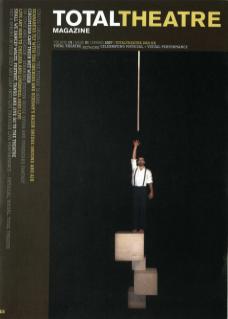What is it that impresses us in feats of illusion? Is it the spectacle itself, an image, interesting or delightful, enjoyed for its own sake? Or does the fascination lie in knowing that what we are seeing is produced by human agency, and yet not being able to see the mechanics? Or even in seeing the mechanics and nevertheless subscribing to the idea?
In Momix’s Lunar Sea the illusion was achieved masterfully, but this achievement was almost too great. Luminous patterns and figures, picked out through the use of UV light, and forming themselves on the blackness of the stage, could have been projections, so complete was the disappearance of the performers whose costumes and movements did, in fact, create them. The use of actual projection helped to blur the lines, while the constant score of filmic, sometimes hyperbolic, music added an extra gloss.
After the audience had realised how the trick was performed, therefore, there was little left to enjoy except the images themselves. Like watching a kaleidoscope, or, at less inspired points, a giant screensaver, these images were hypnotic but scarcely encouraging of any deep thought or emotion. I was reminded of descriptions of Victorian experiments in which performers were dispensed with entirely, and the audience treated to a display of music, light, and impressive scene changes. When, towards the end, the dancers at last appeared without their regulation blacks, it was a relief to be reminded that here was not only agency, but also vitality, and the highly choreographed curtain call revealed a band of athletic, accomplished performers. In programme notes, choreographer Moses Pendleton admits that ‘occasionally you’ll see how its being done, but I don’t mind because then you at least realise its being done live’. I would trade illusion for a little more life.

